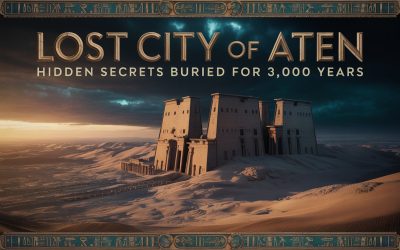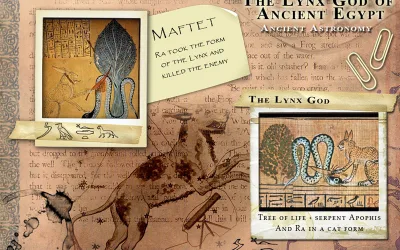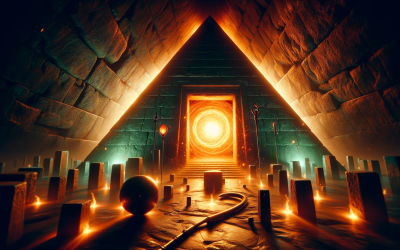This post is about The Secrets behind this amazing structure, because it’s part of a historical place on earth, that many visit each year.
Secrets of the Sphinx
“In a land fare to the south, lays a gigantic creature unlike any other. It carries many secrets from the past, and enchant people to have thousands of theories, of it existence..”
Table of Contents
Facts About this Amazing Structure
- Location: The Sphinx is located on the Giza Plateau, near Cairo, Egypt, and is adjacent to the Great Pyramids.
- Age: It is believed to date back to the reign of Pharaoh Khafre, around 2500 BC, making it over 4,500 years old.
- Physical Description: It is a limestone statue with the body of a lion and the head of a human, believed to be the likeness of Pharaoh Khafre.
- Size: The Sphinx measures approximately 73 meters (240 feet) long, 20 meters (66 feet) high, and 19 meters (62 feet) wide.
- Purpose: The exact purpose of the Sphinx remains a mystery. Some believe it served as a guardian of the pyramids, while others think it may have had astronomical significance.
- Missing Nose: The nose is missing. While there are many theories, the exact reason for its absence remains unknown. Some suggest it was broken off by Napoleon’s soldiers, but drawings from before Napoleon’s time show the nose was already missing.
- Restorations: Over the millennia, the Sphinx has undergone various restoration efforts due to erosion and other forms of degradation.
- Original Appearance: It is believed that the Sphinx was originally painted in vivid colors and had a ceremonial beard, fragments of which can be seen in the British Museum.
- Symbolism: is often associated with the sun god Ra and is considered a symbol of strength, wisdom, and mystery.
- Dream Stela: Between the paws of the Sphinx lies the Dream Stela, a granite slab inscribed by Pharaoh Thutmose IV. The stela describes a dream in which the Sphinx asked the future pharaoh to clear the sand covering its body in exchange for the throne of Egypt.
- Archaeological Studies: Despite extensive studies and excavations, there are still many unanswered questions about the Sphinx. Some theories even suggest that there are hidden chambers beneath it.
- Cultural Significance: is not only a historical and architectural marvel but also holds deep cultural and spiritual significance for the Egyptian people and the world at large.

The Terrifying One
The Great Sphinx, hailed as a masterpiece of ancient craftsmanship, stands sentinel over the iconic pyramids, the everlasting abodes of the Pharaohs. Its unwavering gaze eastward has, in a bygone epoch, garnered it the epithet ‘The Terrifying One’. This designation reverberates with the dread and awe the Sphinx evoked in those who stood before it.
The Sphinx of Giza was once upon a time also known as “The Terrifying one”
The intriguing appellation, ‘The Terrifying One,’ finds its roots in the New Kingdom era of ancient Egypt (circa 1550-1070 BCE), where it was revered as ‘Horemakhet’ or Horus in the Horizon, symbolizing its heavenly guardianship. The metamorphosis from a divine sentinel to ‘The Terrifying One’ mirrors the blend of dread and veneration the ancient Egyptians nurtured for this monumental effigy.
The statue is located on Western bank of River Nile along the Giza plateau.
There are many mysterious theories about this magnificent structure, one of them is the theory about who the Sphinx portrays. It’s believed that it is the face of one pharaoh named Khafra.
The Missing Nose
One popular narrative surrounding the Sphinx’s missing nose involves Napoleon Bonaparte. Legend has it that during Napoleon’s Egyptian campaign in the late 18th century, his troops used the Sphinx for target practice, ultimately dislodging its nose. However, historical scrutiny has debunked this tale. Drawings from the 18th century, predating Napoleon’s expedition, depict the Sphinx without its nose, pointing to an earlier date of disfigurement.
A more credible explanation links the missing nose to Muhammad Sa’im al-Dahr, a Sufi Muslim from the 14th century. Disturbed by the local peasants’ practices of offering tributes to the Sphinx in hopes of a bountiful harvest, al-Dahr vandalized the monument to curtail what he saw as heretical practices. It’s said that they later executed him for his act of desecration.
The Sphinx’s missing nose is not merely a physical absence; it symbolizes the passage of time and the ever-changing narratives of history. The various theories about the Sphinx’s missing nose offer glimpses into the diverse historical, cultural, and social dynamics that have interacted with and shaped this ancient monument over centuries.
Moreover, the mystery surrounding the Sphinx’s missing nose has further enhanced the allure of this ancient sentinel, sparking curiosity and beckoning scholars and tourists alike to delve into its rich and complex past. As they stand before the Sphinx, they are invited to ponder not only the enduring legacy of ancient Egypt but the intricate tapestry of stories and histories that continue to shape the narrative of this monumental guardian of Giza.
The Beard of the Statue
At one point in time, a ceremonial beard adorned the chin of the Sphinx, symbolizing divine wisdom and kingship in ancient Egyptian culture. The loss of the beard, however, has unfolded into a narrative as intriguing as the monument itself.
The tale of the missing beard plunges us back into the pages of history, amidst the shifting sands of time. Theories suggest that the beard was removed, either through deliberate actions or the erosive dance of desert winds over centuries. The actual fate of the beard remained shrouded in mystery until fragments were unearthed near the Sphinx’s paws in the early 19th century.
These unearthed fragments of the Sphinx’s beard are now housed in the British Museum and the Museum of Egyptian Antiquities in Cairo, whispering tales of a bygone era to those who venture near. The re-discovery has ignited a flame of historical curiosity, as each fragment holds clues to the Sphinx’s majestic past, and the rich tapestry of Egyptian history.
The tale of the Sphinx’s missing beard transcends a mere physical loss. It symbolizes an enduring quest for knowledge, a journey through the annals of history that continues to captivate the hearts and minds of the curious. It’s a narrative that ties the past to the present, inviting a deeper exploration into the enigmatic heart of ancient Egypt.
A German archaeologist named Rainer Stadelmann, did a careful examination of the beard, because it was detached. He also examined the headdress, and he concluded it was more parallel to Pharaoh Khufu than the pharaoh Khafra.
He supported this with the evidence that Khafra’s Causeway was constructed to suit the pre-existing structure, which by then could have been the sphinx.

The Largest Monolith
Of all monoliths, this is the largest ,standing 74 meters long, 19 meters wide and 20 meters tall. The structure may have been built between 2558-2532 BC.
There are many questions regarding the sphinx, and the countless of questions have led to the formation of different sphinx riddles.
According to evidences found, the structure was part of a larger funerary complex.
The Secret of the Sphinx Temple
They build the valley temple and temple with 200 tone stone blocks; they were excavated from the structure’s enclosure. Many people have tried to explain the origin and the nature of the sphinx, but with no luck.

- The Sphinx Temple is a part of a temple complex associated with solar theology and the resurrection of Pharaoh Khafre, aligning with the rising and setting sun to worship different aspects of the sun god1.
- Constructed from limestone blocks carved from the rock of the Giza Plateau, the temple’s walls were adorned with pink granite from distant quarries in Aswan, while its interior walls were made of limestone from Tourah, a quarry east of Cairo2.
- The temple lies northwest of the Valley Temple of the Pyramid Complex of Khafre, near the Great Sphinx, and is considered a significant monument representing ancient Egyptian civilization3.
- The Sphinx Temple’s precise function remains unclear, although it’s closely related to the Sphinx, suggesting a significant religious or symbolic relationship between the two structures4.
- Geological studies reveal that the core blocks used for the Sphinx Temple’s construction were quarried from the layers below the chest height of the Sphinx’s body, indicating that the Sphinx and the temple were constructed almost concurrently during Pharaoh Khafre’s reign4.
- The temple’s proximity to the Great Sphinx, and its direct alignment with the Valley Temple and the Pyramid Complex of Khafre, indicate its importance and possibly its central role in the religious or ceremonial practices of the time34.
Early Egyptologists know they (the ancient Egyptian) unearthed the structure during the reign of the Egyptian pharaoh Tuthmosis IV.
The Facinating Dream Stela

Between the paws of the monumental Great Sphinx of Giza lies a relic that bridges the corporeal and the ethereal – the Dream Stela. This ancient slab of stone, etched with hieroglyphs, unfolds a narrative that ties the fates of a Pharaoh to the celestial, through the medium of a dream. It’s a narrative that continues to captivate scholars, historians, and dreamers alike, drawing them into a captivating saga rooted in the sands of ancient Egypt.
The Dream Stela, also known as the Stele of Thutmose IV, dates back to the New Kingdom period. It tells the tale of a young Thutmose IV, who, while on a hunting expedition, takes a rest in the shadow of the Sphinx, which at that time lay half-buried in the sands. In a dream, the Sphinx, revered as a deity, promises Thutmose IV the throne of Egypt in return for freeing it from the encroaching sands.
Upon awakening, the enthralled prince, bound by the divine encounter, sets forth to fulfill the Sphinx’s wish. His actions not only paved his way to kingship but also bestowed upon Egypt a narrative that melds the divine with the earthly, encapsulated forever in the stone of the Dream Stela.
The Dream Stela stands as a testament to the mystical allure that the ancient world holds. Each hieroglyph, each etch on the stone, draws the modern soul back into a realm where the divine conversed with the mortal, where dreams bore the seeds of destiny.
The Sphinx and its Dream Stela continue to stand as silent witnesses to a past where the boundaries between the earthly and the divine were traversed through the veil of dreams. For the modern seeker, the Stela is not merely stone and hieroglyph; it’s a portal into the fascinating ethos of ancient Egypt, a narrative etched in stone, awaiting to unfold its tales to those who stand before it with a heart full of wonder.
As the sun casts long shadows over the Giza Plateau, the Dream Stela, nestled securely between the paws of the Sphinx, invites the curious to delve into a narrative that transcends time, to traverse the sands of time through the whims of a dream that shaped the destiny of a Pharaoh, and through him, the annals of ancient Egypt.
However, the structure could not have formed a perfect sculpture of a human’s head and a lion’s body. The proportions between the head and body, are too different. This would show that at some point even before the ancient Egyptian’s such as Thutmose IV it must have been a Lion’s head. Being a Lion that looked up into the universe at its reflection in the constellation of Leo, as it has been said though our history, as above so below.
The Erosion Hypothesis
There are other theories like the water erosion hypothesis, which is rather interesting, and might hold the most truth of all theories.
This water erosion theory is placed in the category of geology, and it is presented by Mr. John Anthony West in collaboration with Mr. Robert M. Schoch.
Thoughts about the Sphinx One mythologist Colin Reader proposed the sphinx of Giza could have been a place for worship before necropolis.
Over the last 700 years, many people have tried to demystify the mysteries behind the sphinx, but only having theories of what could have created this amazing structure.
Other poets have depicted the structure having breasts similar to those of women…
The structure ads immense history and it is a great place to learn the ancient Egyptian culture and history.
This was a short recap of how the Sphinx was seen by different people. Some are not plausible, while others surely seem proven by nature itself.
Despite all the theories, one thing is for curtain, The Sphinx is indeed a famous historical place, where dreams meet reality and become one.
Now with this in mind, I would like to draw your attention further south, to the temples of Karnak.
We are actually going to zoom in on the building blocks themselves. Those use at the Sphinx temple, and other building blocks that I found at Karnak.
Is There a Chamber Underneath the Sphinx?
We will look closer at this in an upcoming article, so stay tuned to see what we discover…



